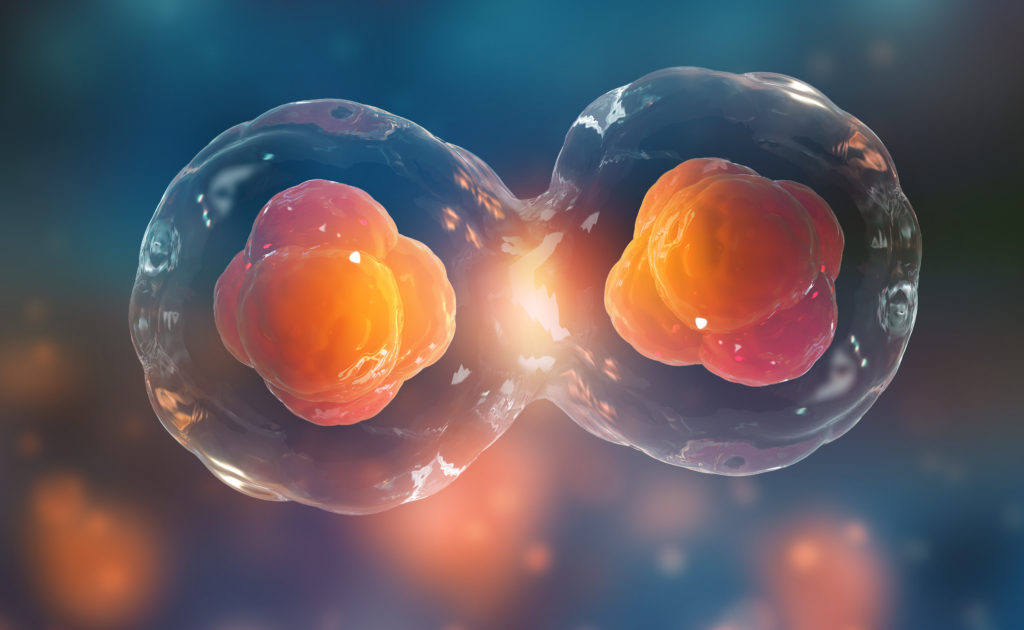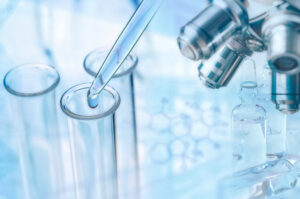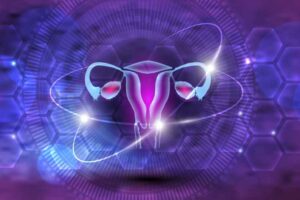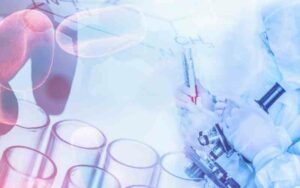Ovarian aging and advanced maternal age
Since the firsts reports of spontaneous pregnancies achieved after bone marrow transplantation in oncologic women with primary ovarian insufficiency, there is increasing evidence supporting the regenerative effects of stem cell-based therapies in the ovarian niche.
These findings serve as a proof of concept for the ability of residual quiescent follicles of damaged ovaries to produce competent oocytes in an adequate ovarian environment but should not be restricted to the limited population of young cancer patients. In fact, a small pool of dormant primordial follicles remains even in the non-functional ovaries of menopausal women and patients diagnosed with premature ovarian insufficiency due to several causes.
Nowadays, women in modern society have delayed the age of childbearing due to profound socio-economic changes. Thus, ovarian aging has turned into a key challenge for Reproductive Medicine, as the ovary ages chronologically before other organs producing a decline in fecundity in a woman’s thirties, leading to ovarian fibrosis and complete ovarian failure in the early fifties (1). Therefore, the advanced maternal age, which influences both the quantity and quality of oocytes, has currently become the main determinant of fertility (1). In all cases of ovarian impairment, such as poor ovarian response and diminished ovarian reserve or primary ovarian insufficiency, there remains a need for methods to restore fertility in patients seeking reproductive success but where oocyte donation is the only practical option (2).
Designing new treatments against reproductive aging.
Due to the relevance of aging in infertility, the next two decades will see new research aimed at developing methods to rejuvenate oocytes by repairing genetic damage, or by introducing new sources of energy (3). The creation of gametes by cell reprogramming will be another source of healthy oocytes (and spermatozoa) that may certainly change the perspective of infertility in this century (4-6). A new potential source of oocytes will constitute a major challenge to the central dogma of reproductive biology by which females of most mammalian species, including humans, lose the capacity for oocyte generation during fetal development.
To date, the recovery of ovarian function has been reported in preclinical models by using adult stem cells from mesenchymal/stromal and hematopoietic origins. The Mesenchymal stem cells can be isolated from several adult tissues (7). Their ability to engraft, survive, and proliferate into the ovaries was first assessed by Liu et al. (8) using chemotherapy-induce mouse models for ovarian damage where allowed short-term fertility recovery and live birth of healthy offspring (9).
Umbilical cord blood, amniotic membranes, menstrual blood, adipose tissue and endometrial tissues have been considered a feasible sources of mesenchymal stem cells, with promising results for several degenerative diseases both inside (10-14) and outside the reproductive system (15-17). Bone marrow also represents a feasible source for mesenchymal cells but their clinical use still requires culture techniques to reach relevant therapeutic cell numbers with an increased risk for cells to lose part of their specific regenerative properties or to accumulate chromosomal aberrations during in vitro culture.
To bypass these concerns, we proposed to take advantage from the non-invasive protocols used by the oncologists and hematologists for bone marrow stem cell transplant based on the proliferation and mobilization from the whole population of bone marrow derived stem cells to peripheral blood by a pharmacological treatment whereby they can be easily collected avoiding invasive and painful procedures like the iliac crest puncture. With this procedure we isolate the whole population of bone marrow-derived stem cells that represent a heterogeneous group of mononuclear cells with multi-differentiation potential that includes several hematopoietic, mesenchymal, and endothelial stem/progenitor cells (18, 19).
In fact, we have regenerated the endometrium in women with Asherman’s syndrome after isolation and infusion of a specific subpopulation of bone marrow stem cells, the CD133+ cells, using this procedure (20). These cells also exerted regenerative properties in other human tissues such as myocardium (15-17).
Bone marrow derived stem cells for ovarian rejuvenation.
Within the ovarian context, the infusion of the whole population of human bone marrow-derived stem cells promote human and mouse follicle growth, ovarian local vascularization, increase follicle and stromal cell proliferation, and reduce apoptosis and atresia providing an adequate ovarian niche for follicular rescue in patients with impaired or aged ovarian reserve. These multiple regenerative effects on the ovarian stroma have been observed by intravenous infusion of the whole population of human BMDSCs into two different mouse models for diminished ovarian reserve and premature ovarian insufficiency (21).
Based on this, we aimed to evaluate effects of autologous stem cell ovarian transplant (ASCOT) on the ovarian reserve of poor responder women with very poor prognosis (21). With this purpose we designed a method to mobilize, collect and deliver bone marrow derived stem cells directly to human ovaries. This unique study developed in patients showed that ASCOT improves ovarian reserve biomarkers and reproductive outcomes, resulting in more follicles and oocytes developed after ovarian stimulation. This technique allowed spontaneous pregnancies in poor responder women previously limited to egg donation but, further research is still needed as the embryo euploidy was not modified by the stem cells therapy.
Post by Sonia Herraiz- Evers JL. Female subfertility. Lancet 2002;360:151-9.
- Kaspers GJ, Veerman AJ, Popp-Snijders C, Lomecky M, Van Zantwijk CH, Swinkels LM et al. Comparison of the antileukemic activity in vitro of dexamethasone and prednisolone in childhood acute lymphoblastic leukemia. Med Pediatr Oncol 1996;27:114-21.
- Labarta E, de Los Santos MJ, Escriba MJ, Pellicer A, Herraiz S. Mitochondria as a tool for oocyte rejuvenation. Fertility and sterility 2019;111:219-26.
- Hayashi K, Hikabe O, Obata Y, Hirao Y. Reconstitution of mouse oogenesis in a dish from pluripotent stem cells. Nature protocols 2017;12:1733-44.
- Hikabe O, Hamazaki N, Nagamatsu G, Obata Y, Hirao Y, Hamada N et al. Reconstitution in vitro of the entire cycle of the mouse female germ line. Nature 2016;539:299-303.
- Morohaku K, Tanimoto R, Sasaki K, Kawahara-Miki R, Kono T, Hayashi K et al. Complete in vitro generation of fertile oocytes from mouse primordial germ cells. Proceedings of the National https://www.ivi-rmainnovation.com/wp-admin/edit-comments.phpAcademy of Sciences of the United States of America 2016;113:9021-6.
- Friedenstein AJ, Petrakova KV, Kurolesova AI, Frolova GP. Heterotopic of bone marrow. Analysis of precursor cells for osteogenic and hematopoietic tissues. Transplantation 1968;6:230-47.
- Liu T, Huang Y, Guo L, Cheng W, Zou G. CD44+/CD105+ human amniotic fluid mesenchymal stem cells survive and proliferate in the ovary long-term in a mouse model of chemotherapy-induced premature ovarian failure. Int J Med Sci 2012;9:592-602.
- Xiao GY, Liu IH, Cheng CC, Chang CC, Lee YH, Cheng WT et al. Amniotic fluid stem cells prevent follicle atresia and rescue fertility of mice with premature ovarian failure induced by chemotherapy. PloS one 2014;9:e106538.
- Su J, Ding L, Cheng J, Yang J, Li X, Yan G et al. Transplantation of adipose-derived stem cells combined with collagen scaffolds restores ovarian function in a rat model of premature ovarian insufficiency. Human reproduction (Oxford, England) 2016;31:1075-86.
- Wang Z, Wang Y, Yang T, Li J, Yang X. Study of the reparative effects of menstrual-derived stem cells on premature ovarian failure in mice. Stem cell research & therapy 2017;8:11.
- Lai D, Wang F, Yao X, Zhang Q, Wu X, Xiang C. Human endometrial mesenchymal stem cells restore ovarian function through improving the renewal of germline stem cells in a mouse model of premature ovarian failure. Journal of translational medicine 2015;13:155.
- Zhu SF, Hu HB, Xu HY, Fu XF, Peng DX, Su WY et al. Human umbilical cord mesenchymal stem cell transplantation restores damaged ovaries. Journal of cellular and molecular medicine 2015;19:2108-17.
- Elfayomy AK, Almasry SM, El-Tarhouny SA, Eldomiaty MA. Human umbilical cord blood-mesenchymal stem cells transplantation renovates the ovarian surface epithelium in a rat model of premature ovarian failure: Possible direct and indirect effects. Tissue & cell 2016;48:370-82.
- Adler DS, Lazarus H, Nair R, Goldberg JL, Greco NJ, Lassar T et al. Safety and efficacy of bone marrow-derived autologous CD133+ stem cell therapy. Front Biosci (Elite Ed) 2011;3:506-14.
- Bongiovanni D, Bassetti B, Gambini E, Gaipa G, Frati G, Achilli F et al. The CD133+ cell as advanced medicinal product for myocardial and limb ischemia. Stem cells and development 2014;23:2403-21.
- Ahmadi H, Baharvand H, Ashtiani SK, Soleimani M, Sadeghian H, Ardekani JM et al. Safety analysis and improved cardiac function following local autologous transplantation of CD133(+) enriched bone marrow cells after myocardial infarction. Current neurovascular research 2007;4:153-60.
- Hirschi KK, Goodell MA. Hematopoietic, vascular and cardiac fates of bone marrow-derived stem cells. Gene therapy 2002;9:648-52.
- Zhang M, Huang B. The multi-differentiation potential of peripheral blood mononuclear cells. Stem cell research & therapy 2012;3:48.
- Santamaria X, Cabanillas S, Cervello I, Arbona C, Raga F, Ferro J et al. Autologous cell therapy with CD133+ bone marrow-derived stem cells for refractory Asherman’s syndrome and endometrial atrophy: a pilot cohort study. Hum Reprod 2016;31:1087-96.
- Herraiz S, Buigues A, Diaz-Garcia C, Romeu M, Martinez S, Gomez-Segui I et al. Fertility rescue and ovarian follicle growth promotion by bone marrow stem cell infusion. Fertil Steril 2018;109:908-18 e2.





